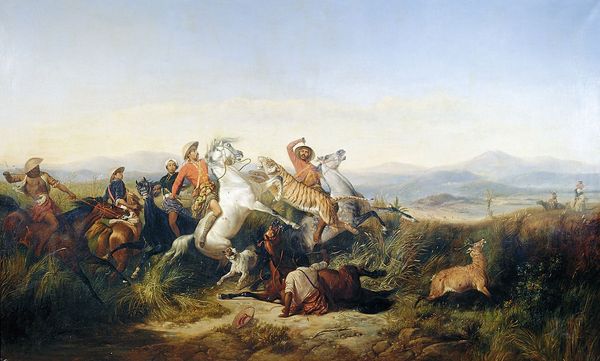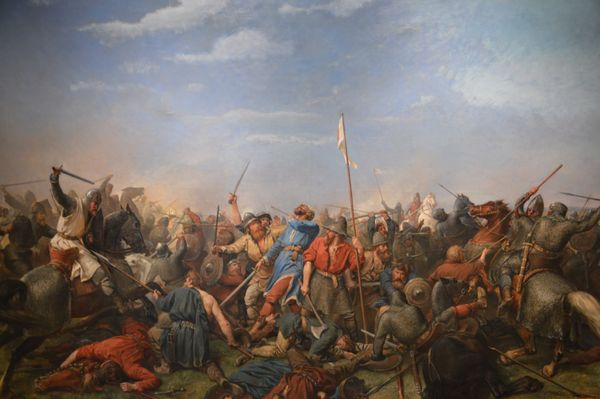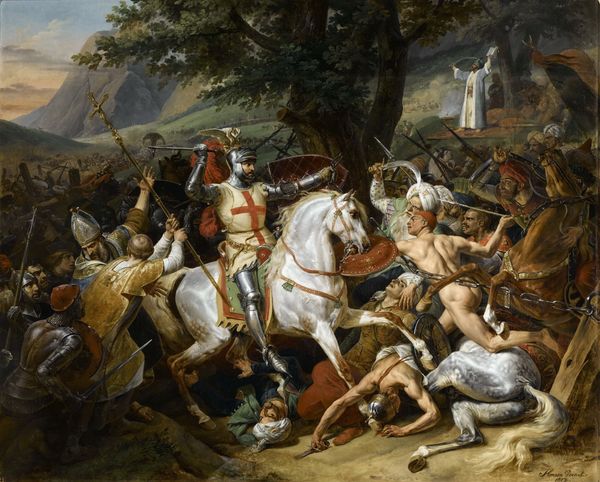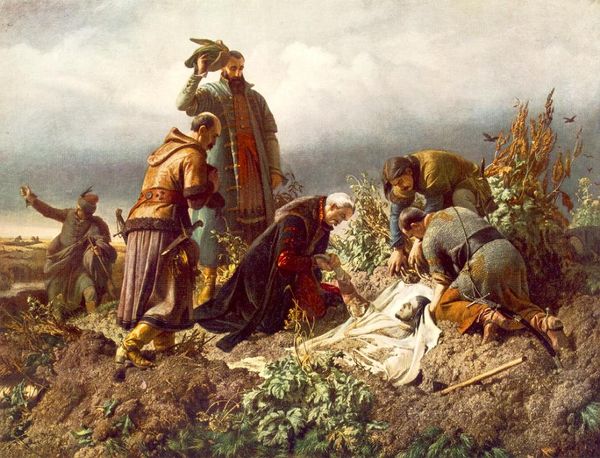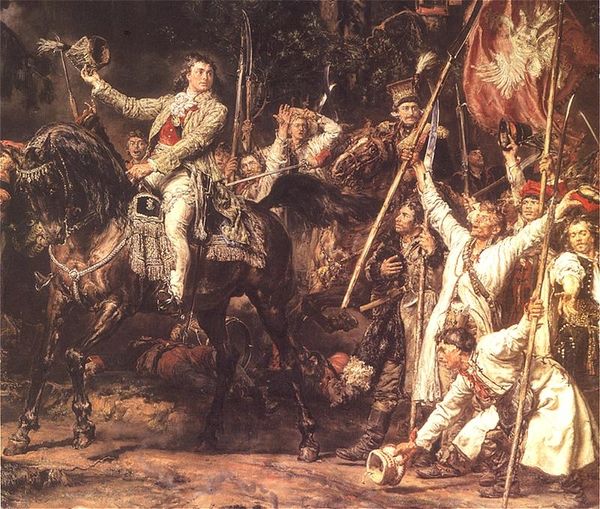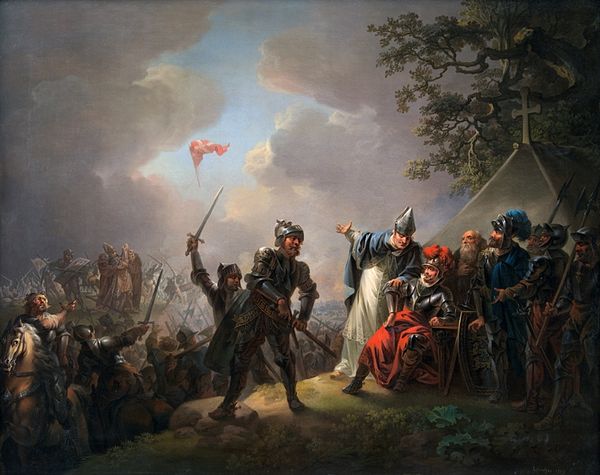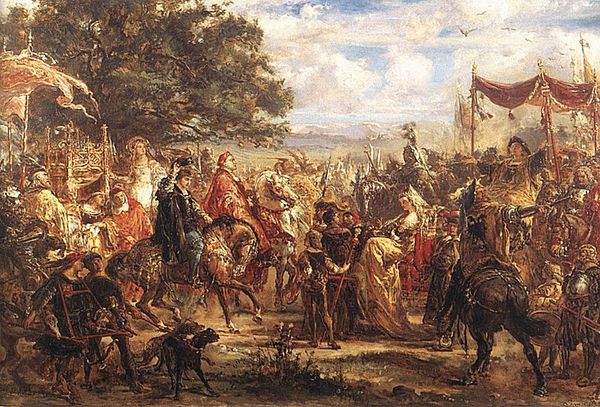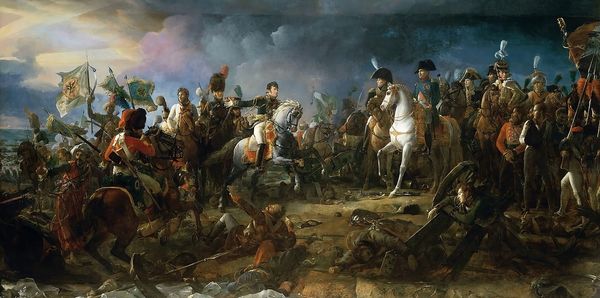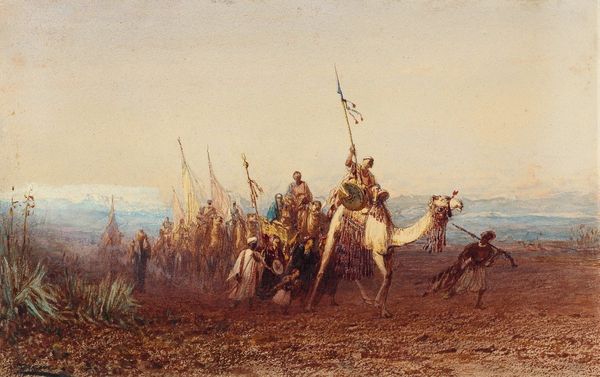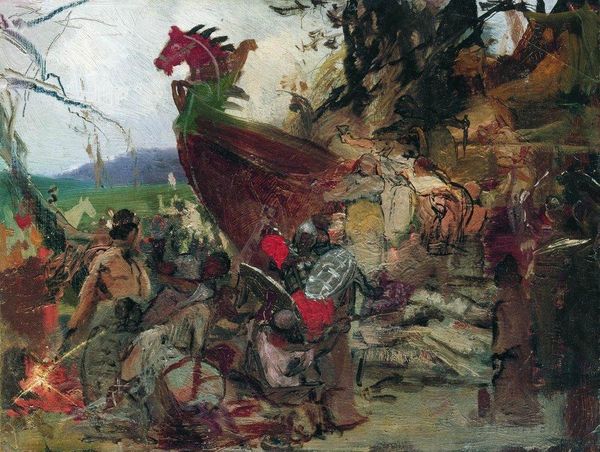
Copyright: Public domain
Curator: What strikes me first is the overwhelming feeling of desolation emanating from this work. A field of bones… it speaks of immense loss and a heavy historical burden. Editor: Indeed. That stark foreground really sets the stage. But, let’s talk about what we’re seeing. This oil painting is "Germanicus devant les restes des légions de Varus" painted in 1896 by Lionel Noel Royer. The title translates to “Germanicus Before the Remains of Varus' Legions." It clearly depicts a somber historical moment. Curator: Precisely! And within that moment, there are potent symbols at play. Look at Germanicus, on horseback, a beacon of Roman authority amidst utter ruin. His raised arm, the fluttering red cape... Royer crafts him as both a leader and a figurehead of Rome’s resilience, echoing classic Roman iconography, evoking ideals of justice and vengeance. Editor: That red fabric... there's so much of it draped across the painting and the trees... you would almost believe that its not just about signalling and costuming here, but a production surplus from some nearby fabric mill in 1896, or even that red dye pigment being especially cheap, accessible, or fashionable, directing the artist towards heavy use of red. Its material influence perhaps overshadowing any careful, intentional construction. Curator: An intriguing suggestion. I'd argue, however, that its about visual strategy. This striking use of color connects to Romanticism’s emphasis on intense emotional experiences and grandiose scenes. Note how he is framed against the golden dawn in the background, the symbol of a renewed day... there is some kind of hope despite this horrifying panorama. Editor: A good observation. Though thinking about artistic choices of 1896 through the lens of available pigments feels more grounded to me. You can tell the artistic value of color depending on who used it back then, from Van Gogh’s humble ochre, to someone who uses prussian blue when the budget is there. I wonder what they mixed in this piece? Curator: That contrast – between a reviving dawn and the decay strewn on the earth – is profoundly symbolic of civilization’s dance with destruction. The skulls themselves speak volumes— anonymous remains echoing throughout time, reminding viewers about vanity. Editor: And the landscape! How did they access a battlefield this accurately without something like documentary photography to use as reference for details like fallen shields? What steps did it take to realistically capture these historical artifacts for their reference? That labour! Curator: Perhaps historical records influenced his composition more? But looking beyond labor or pigments, Royer used his medium to present a crucial part of Rome’s cultural memory. By representing this scene, he ensures that the echoes of Varus’ defeat continue to resonate— a cautionary tale transformed into visual narrative. Editor: A striking tale indeed... from cultural symbolism to considering its material production, this piece has certainly given us food for thought. Curator: Absolutely! This interplay, this constant tension and renewal in this space...its simply masterful and disturbing.
Comments
No comments
Be the first to comment and join the conversation on the ultimate creative platform.
